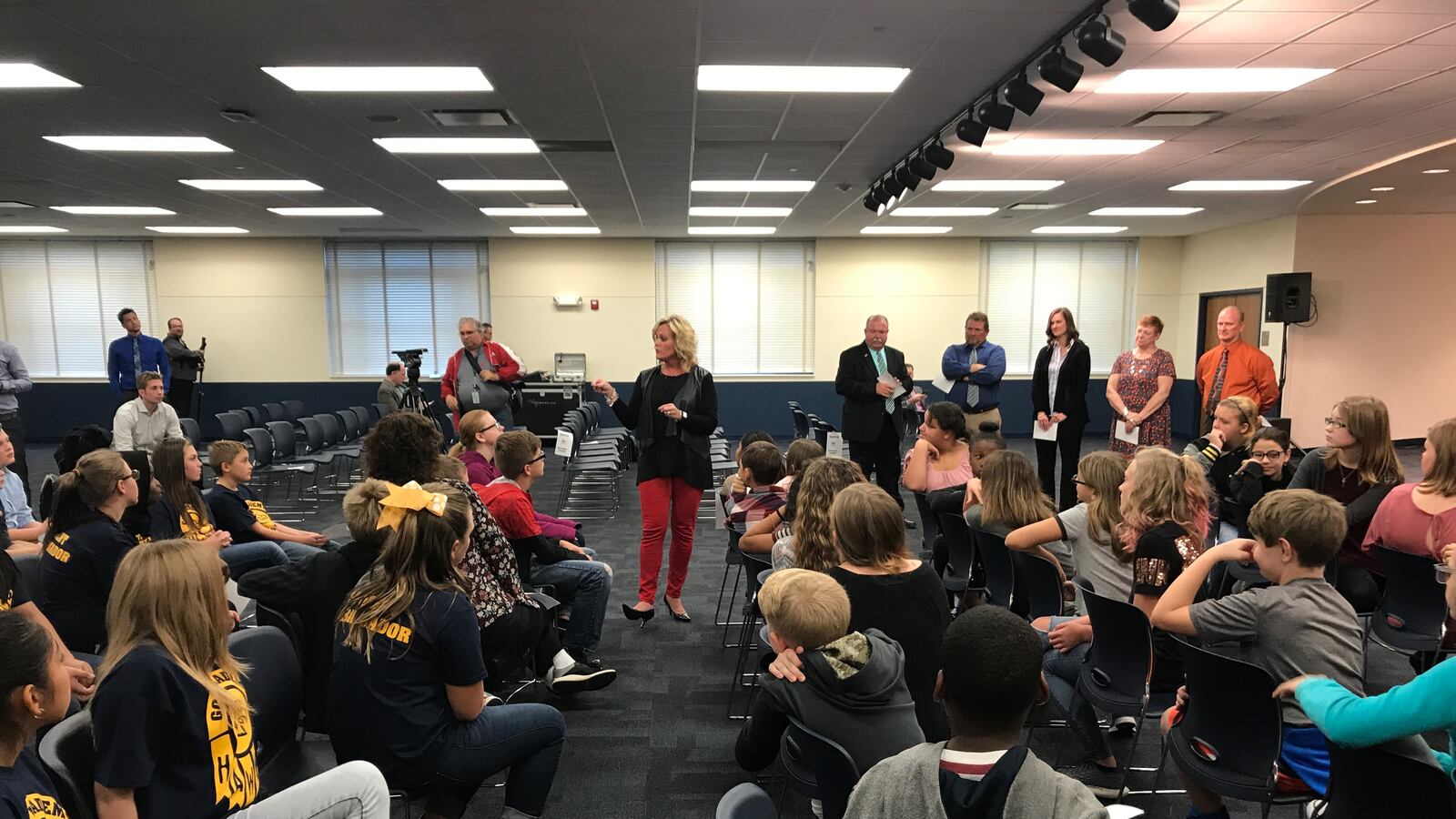Indiana officials announced a new partnership on Tuesday with the nonprofit EducationSuperHighway aimed at improving high-speed internet access in public school classrooms.
“To be ready for the jobs of the future, today’s students need the exposure and opportunity provided by quality digital learning experiences,” said Gov. Eric Holcomb, who was at the announcement today in Decatur Township.
As Indiana continues its work developing a new computer-based state test, the ability for schools to have reliable connectivity is particularly important. Test researchers have pushed lawmakers and policymakers for years to expand computer-based testing, which is cheaper and allows for types of tests that could better measure student learning. But internet access has been a sticking point.
Rural schools, in particular, have said they struggled to connect. In 2016, about 80 percent of Indiana students took tests online, according to the state department of education.
And while 98 percent of Indiana classrooms meet federal minimum recommendations for bandwidth, 38,500 students are still without enough internet support in their classrooms. Additionally, there are still 30 schools without high-speed fiber connections, and 88 percent of districts don’t meet national standards for affordable broadband.
The partnership with EducationSuperHighway is meant to fill in the gaps. The organization, founded in 2012, supports states and school districts in their efforts to connect classrooms to high-speed internet services.
Evan Maxwell, EducationSuperHighway’s CEO, said the arrangement with Indiana should come at low or no cost to schools themselves. More than $47 million in federal funds has been earmarked for Indiana and $2 million in state contributions were set aside in the state’s most recent budget.
“We’re looking forward to working with state leaders, school districts and service providers across the state to ensure that every Hoosier student has equal access to high-speed connectivity and the education opportunity that it allows,” he said.
Marwell said the organization will work with school districts to figure out what internet problems exist and how to fix them. They’ll also work with local internet service providers to offer more options to schools. In all of these projects, the federal and state money will be used to shore up existing internet service or install WiFi for the first time.
Marwell said work will begin this school year and over next summer, with the hopes of getting all schools up to speed in about two years. That won’t quite be in time for spring of 2019, when Indiana is planning to give its new computer-based state test, the ILEARN test, for the first time.
The state in the past has been hesitant about moving toward a test that depends heavily on computers. In meetings of the state commission charged with replacing ISTEP last year, Sen. Dennis Kruse, a Republican from Auburn and head of the Senate Education Committee, said scaling back the paper test option could be costly because it would force the state to address technology and internet needs in rural or outdated schools — or shift that burden to cash-strapped districts themselves.
“If we move to all computerized testing, we’ll have to make a significant investment,” Kruse said during an ISTEP meeting last fall. The EducationSuperHighway partnership should eliminate that hurdle.
ILEARN will likely be “computer-adaptive,” which means students get questions that get easier or harder based on their answers. While these kinds of tests can be translated on paper, it’s not ideal. A couple of years ago, Indiana studies of online vs. paper tests have shown that paper tests, in certain subjects, could be easier than online tests. Scores had to be adjusted at the time to make up for that difference.
Overall, the partnership will help close a major gap for schools across the entire state, said state Superintendent Jennifer McCormick
“We have to have capacity in our districts to get it done,” McCormick said. “With curriculum, with instruction, with assessment, the demands are huge.”


